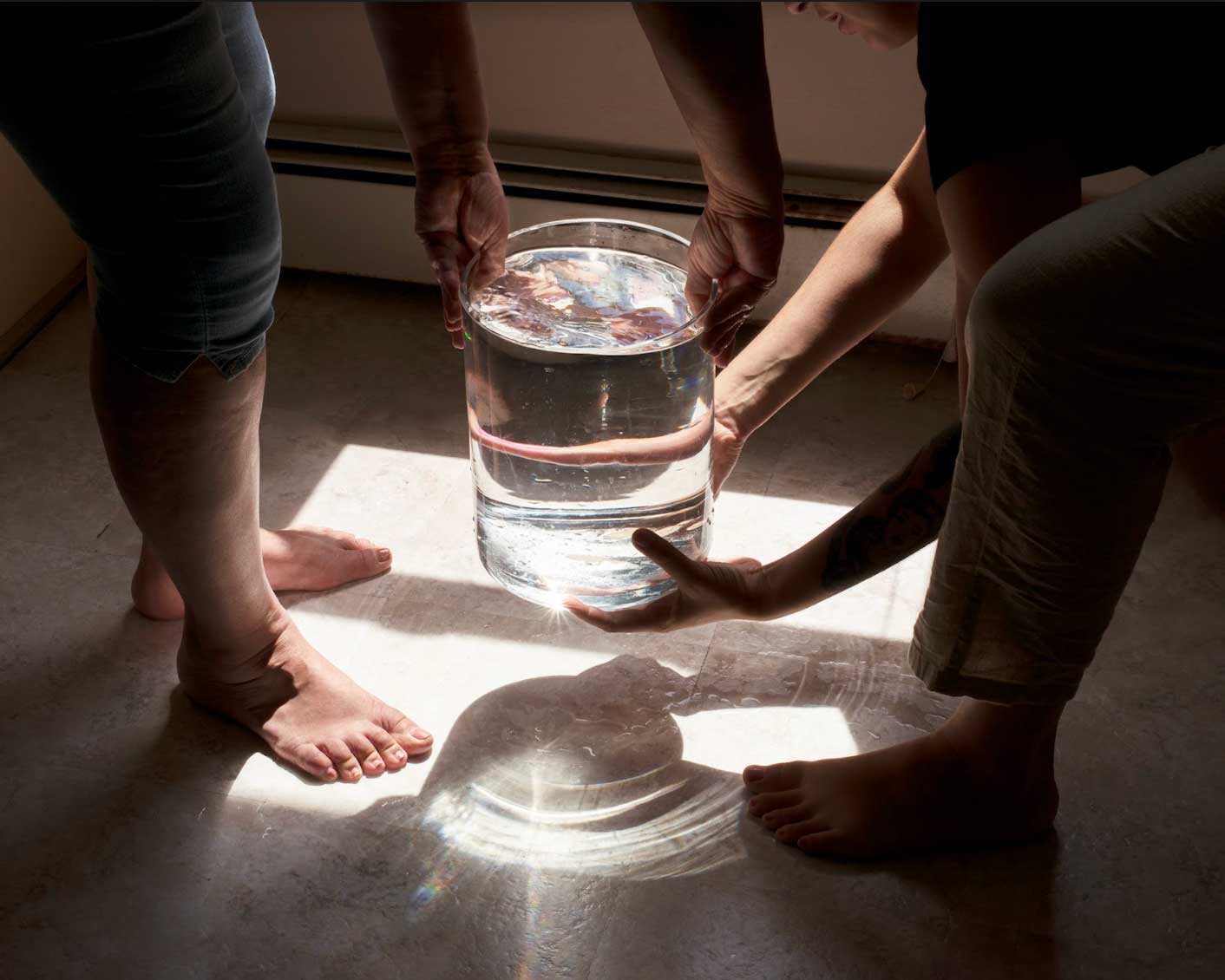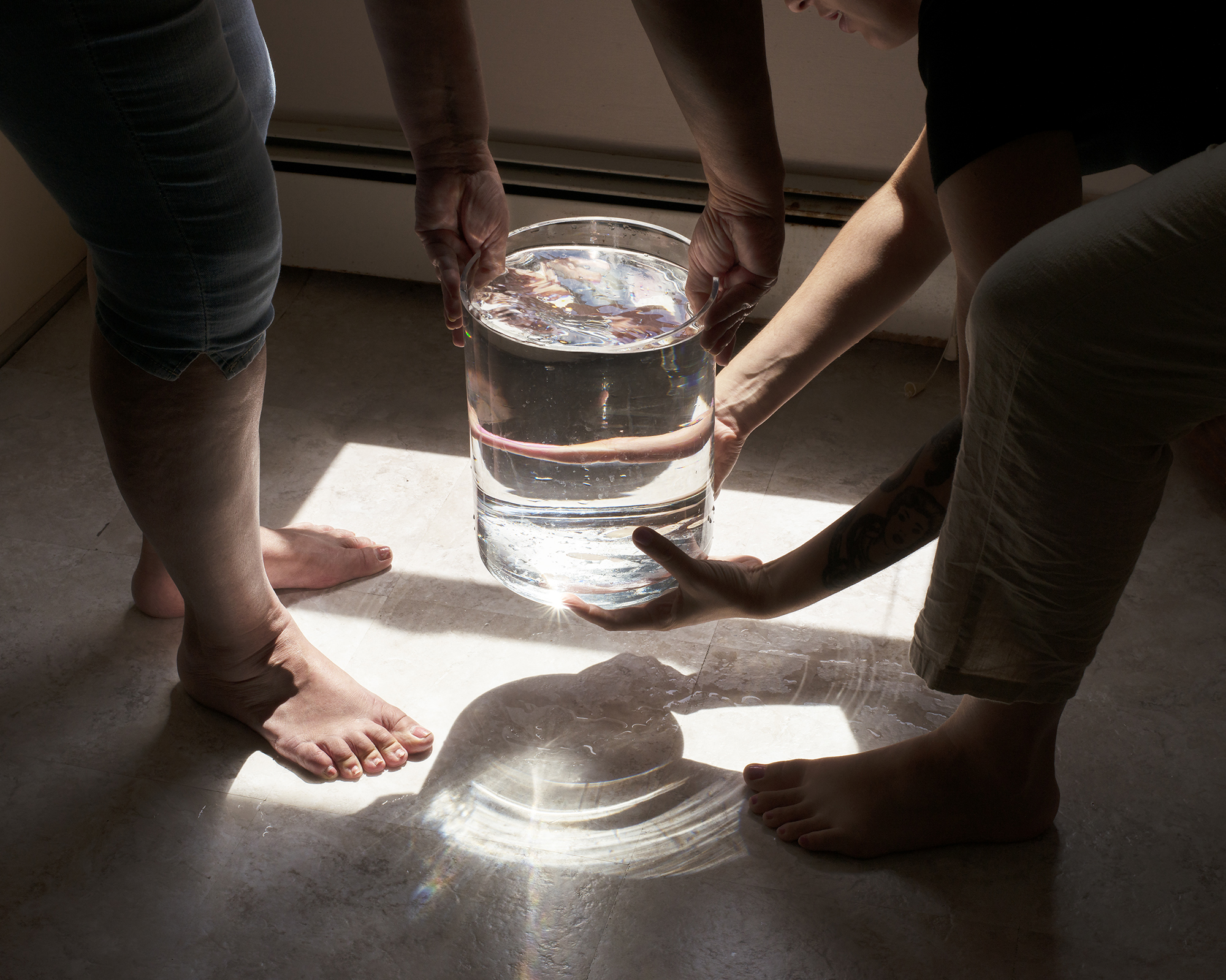
Genesis Baez, Lifting Water, 2017
Genesis Baez exists between two worlds, the Caribbean and northeast USA. Her fragmented experience moving between two homes has directly impacted her practice, constantly in flux within a diasporic system. The artist recalls watching ‘a ring of condensation appear and disappear on a window’ in Puerto Rico airport, likening the phenomena to her own experiences of travelling between two countries. Baez’s true home exists within a liminal space, it is more of an idea than a physical geographic location. As such, her artistic production grapples with the atmospheric and transient details of space and belonging. Moving as part of a diaspora, one belongs to an invisible force. Scattered yet yearning for a lost homeland, those within a diaspora occupy an uncomfortable space of belonging, exclusion, and wandering. Finding a way to express this circumstance, Baez experiments with mirrors and water, explaining that these objects ‘are still their whole selves even when you break them apart’.
In Lifting Water (2017), Baez and her mother lift a heavy vessel of water on the brink of overflowing. Truncated at thigh level, only the legs, bare feet, and hands of the two figures are visible in the frame. A brilliant light, presumably from a window, beams down upon the glass, dispersing tiny shards of rainbows on the floor. Within the vessel of water, Baez and her mother’s hands are elongated and refracted, collecting in a merging of flesh and rippled liquid. Performing this lifting action exclusively for the camera, Baez invites the exploration of an ‘invisible, inaudible, affectual experience’. She uses water, something inherently changeable and untameable, to express something amorphous and purely emotional. Water runs through the entirety of the earth, a gargantuan, independent body that exists in a multitude of places at one single time. As such, Baez compares her own experience of moving countries to the indomitable force of the ocean.
(By Eleanor Lerman)
